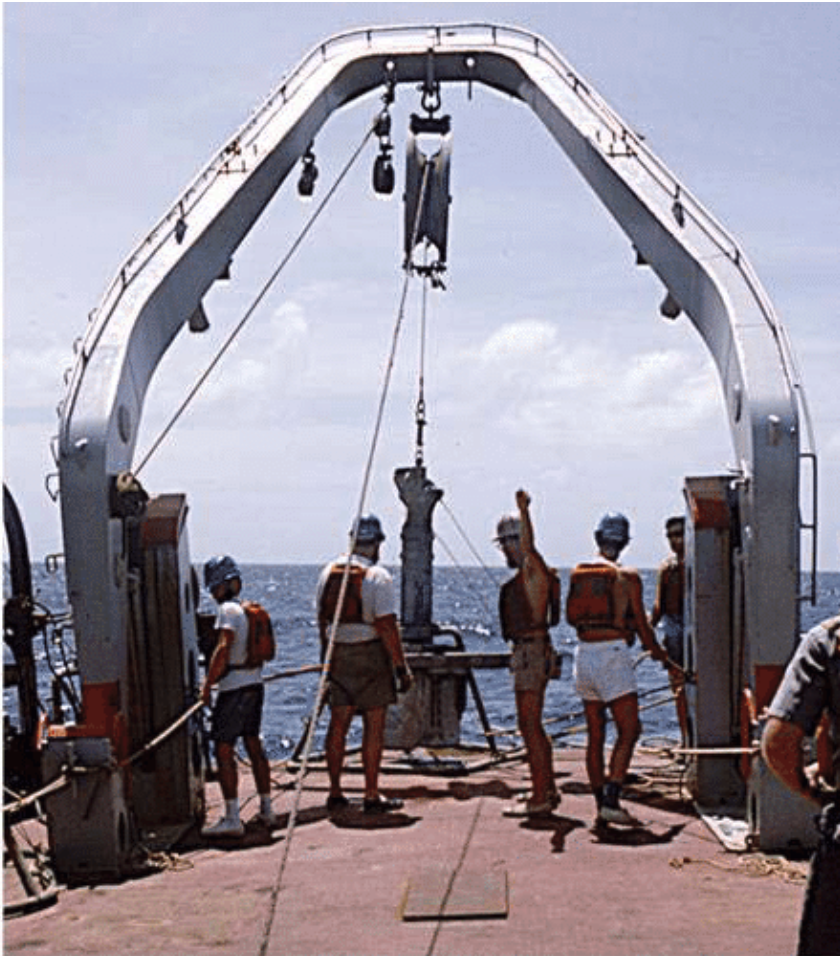Adrian Glover, Feb 2023
Somewhere in the middle of the Pacific Ocean, RRS James Cook
A little over 20 years ago, I was standing in a corridor in the Scripps Institution of Oceanography with my then post-doc advisor, Craig Smith. We had been - in time honoured oceanographic fashion - conducting a last minute raid for supplies for a cruise out the the abyssal Pacific. ‘Lets go say hi to Bob’ Craig said. ‘Erm, Bob Hessler… THE Bob Hessler?’ I replied.

We spent about 30 minutes in his office - a jumbled pile of papers, specimen jars, old computers and bits of oceanographic kit - chatting about our cruise and abyssal ecology. Bob was handing Craig piles of old reprints and books ‘I dont need these anymore - give them to your students!’. Bob - or Robert Hessler - was a living legend of oceanography. A crustacean taxonomist at the start, and in the heart, but an oceanographer in reality. Creator of the spade box core, discoverer of deep-sea biodiversity, first biologist on the hydrothermal vent cruises in ’79. I was, to be frank, a bit star-struck.
There is a fascinating audio interview with Hessler conducted by a Scripps archivist in 2006 (1). Hessler started his training as a palaeontologist, but then took a junior position at the Woods Hole Oceanographic Institution with the benthic ecologist Howard Sanders, who had himself recently started a lab there. Sanders, said Hessler, ‘was perhaps the first real deep-sea ecologist’.
The WHOI bosses had instructed Sanders, just before Hessler joined, to start doing blue-water oceanography (as opposed to messing about in muddy estuaries), and Sanders took his numerical, quantitative methodologies into this new environment. Sanders himself had been advised by the legendary G. Evelyn Hutchinson, a Cambridge-born intellect who moved to Yale and essentially started the entire field of limnology, and a whole raft of ecological theory. He was perhaps the first to think about organisms within the physical and chemical space they occupy - the ecosystem - and laid the groundwork for everything we do know that is related to climate, biodiversity and earth-system change.
It was Sanders who brought this new thinking to the deep. Before that, it was just ‘explorers and taxonomists’ Hessler recalls. Sanders got them counting. And count they did - hundreds of new species in a carefully-designed ecological sampling transect out into the abyss off the eastern seaboard of the USA. Sanders realised that the accumulation rate of species with sampling effort - the so-called ‘collectors curve’ was vastly higher in the deep sea than anyone realised. In fact, it rivalled tropical reef systems for diversity. It was an astonishing discovery that changed our view of the dull plains of abyssal mud forever.
Scripps tried to poach Sanders out of WHOI (the two institutions have a long rivalry), but he wouldnt move and they got the young and highly able Hessler instead. On moving to California, he quickly had the idea to try and sample the deepest and most oligotrophic (food-poor) region he could think of - the central north Pacific gyre. He wanted to push further the idea that the deep-sea was a food-poor desert, with few species. To do the study, he knew he needed a quantitative (numerically accurate) sampling device that could take a lot of mud of a known area. And so the USNEL Spade Box Core was born. Hessler modified the design from a geological corer and took it out to the abyss in the 70s and sampled a site known as CLIMAX II.
The results were even more astonishing than the Sanders discoveries a half-decade earlier. Although the numbers of animals in these food-poor muds was astonishingly small - some box cores had just 20-30 animals in them - almost every specimen belonged to a different species. Hessler had found something we are now very familiar with - the abyss is composed of thousands of species for which we have only ever seen one specimen. Its the ultimate level of rarity. The ultimate social-distancing.
I sit writing this in the laboratory of the research vessel RRS James Cook. We are floating 4,500m above the vast Pacific abyssal plain that Hessler studied. On the deck is a shiny USNEL box core to the same exact design that Hessler specified 50 years ago. There is a remotely operated vehicle (a robot submarine) with the cameras and lights that Hessler foresaw would come to dominate future deep-sea biological survey work. We have thousands of tiny plastic jars ready to sample the ultra-rare abyssal animals that Hessler first sampled.
The powerful heredity of academic thought hits you sometimes. The great Hutchinson - who grew up hanging out with Charles Darwin’s sons in Cambridge - developed Howard Sanders ecological thinking. Sanders in turn inspired Hessler to study the ecology of the deep sea. Craig Smith, as Hessler’s student, learned his oceanography from him.
And now I am standing in Craig Smith’s lab at the Unversity of Hawaii, just last year. We are clearing out papers and samples from his office as he finally retires. ‘These samples could be great for your students’ he exalts happily - handing me a box of specimen jars. For a few precious years, it’s my turn.
(1) Oral History of Robert Raymond Hessler. Interview conducted by Laura
Harkewicz, 27 February 2006 and 6 March 2006. The Library, UC San Diego.
Image: Bob Hessler taking a spade box core sample in the Philippine Trench in 1975 (Source: Schram & Wilson 2021, Robert Raymond Hessler November 22, 1932 – October 17, 2020; 10.13140/RG.2.2.19447.75685)